The Apple iPhone 12 Pro Max and the Samsung Galaxy s21 Ultra are two of the best bleeding-edge high-end smartphones available in the market right now. The former launched in October 2020 starting at $1099 while the latter launched in January 2021 starting at $1199.
Picking one out of these two is a tough decision given how much engineering and thought has gone into their making. In this iPhone vs Samsung guide, we help you come closer to a buying decision.
1. Camera: 4K vs. 8K
First, let's talk specs. The iPhone 12 Pro Max has four cameras in total. A 12MP main sensor, a 12MP ultra-wide, a 12MP telephoto, and a 12MP front camera. It can shoot up to 4K video on both front and back.
The Galaxy S21 Ultra has five cameras in total. A 108MP main sensor supported by Laser Autofocus, a 10MP telephoto lens, an additional 10MP periscope telephoto lens, a 12MP ultra-wide lens (that also doubles as a macro camera), and a 40MP front camera. It can shoot up to 8K video on the back and 4K video on the front.
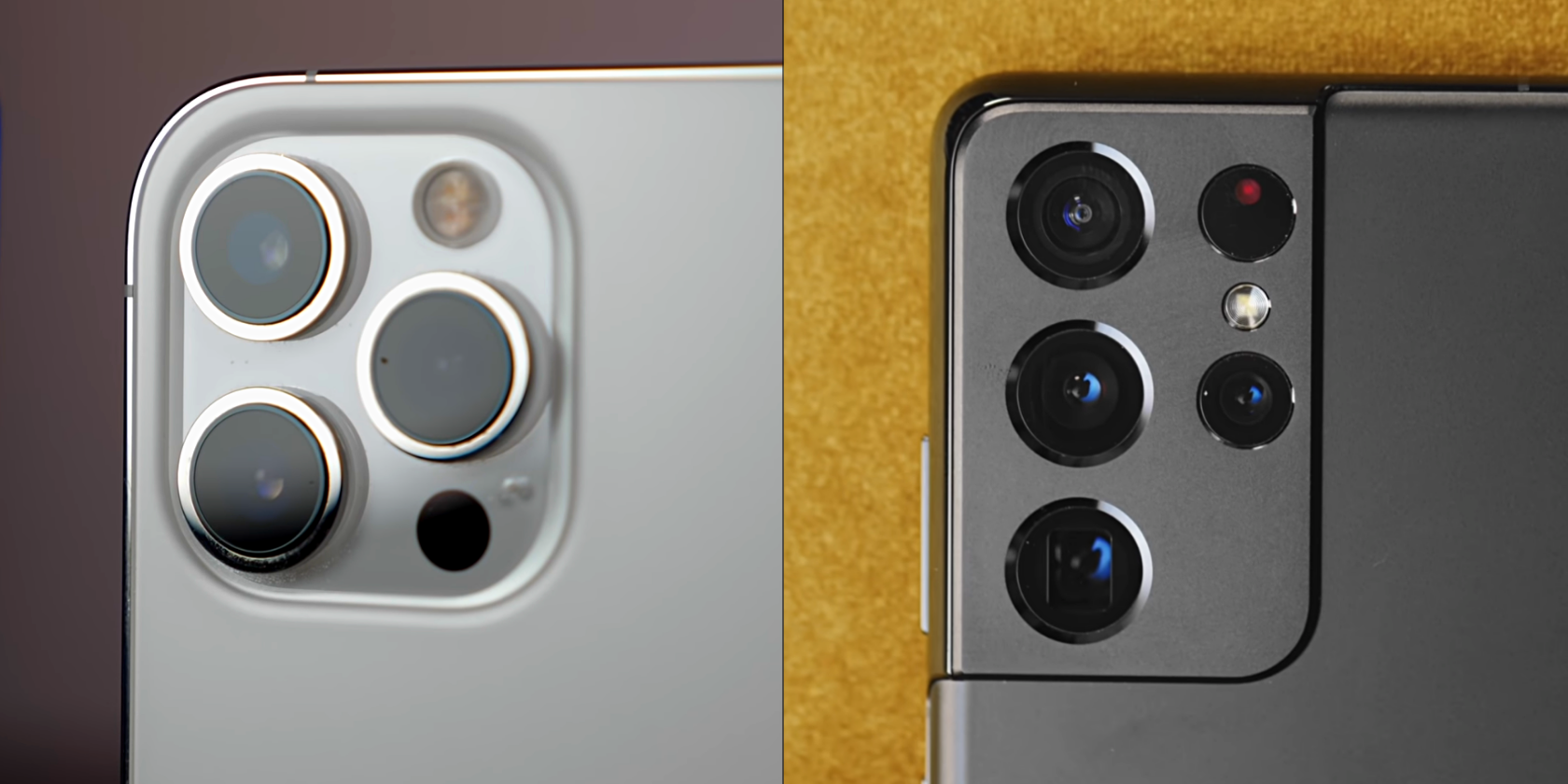
For purists who like natural-looking photos and videos, the iPhone 12 Pro Max delivers an output that feels realistic and is consistent across all its cameras and functionalities, but at the cost of looking a little flat sometimes.
The camera quality gap between the Pro Max model and the Mini model—which is $400 cheaper—of the iPhone 12 series is almost negligible. So if you're planning to buy the Pro Max just for its camera system, you might want to reconsider.
On the other hand, the Galaxy S21 Ultra has a more capable camera system with aggressive image processing algorithms that deliver high-contrast lively photos, but at the cost of looking unnatural or oversaturated in certain conditions.
Although the shots from it do look pleasing to the eye, the output is more experimental and lacks the same level of consistency as the iPhone 12 Pro Max.
That said, both phones have their own areas of specialization. Portrait Mode, video quality, and Night Mode are absolutely stunning on the iPhone 12 Pro Max. But when it comes to zoom capability, Optical Image Stabilization, and the overall camera experience, the Galaxy S21 Ultra is a clear winner given its versatility.
For instance, it has 10x optical zoom (as opposed to 2.5x on the iPhone 12 Pro Max) and fun camera features like Director's View and Single Take that produce share-ready photos and videos for vloggers and influencers. Both devices can take RAW photos for professional editing.
2. Performance: A14 Bionic vs. Snapdragon 888/Exynos 2100
The iPhone 12 Pro Max is powered by Apple's in-house A14 Bionic chip running iOS 14.1 and comes with 6GB RAM and 128/256/512GB of internal storage.
The Galaxy S21 Ultra competes with the Snapdragon 888 in the USA and China or in-house Exynos 2100 chip in much of the rest of the world. It runs its native One UI 3.1 skin on top of Android 11 and comes with 12 or 16GB RAM and 128/256/512GB of internal storage.
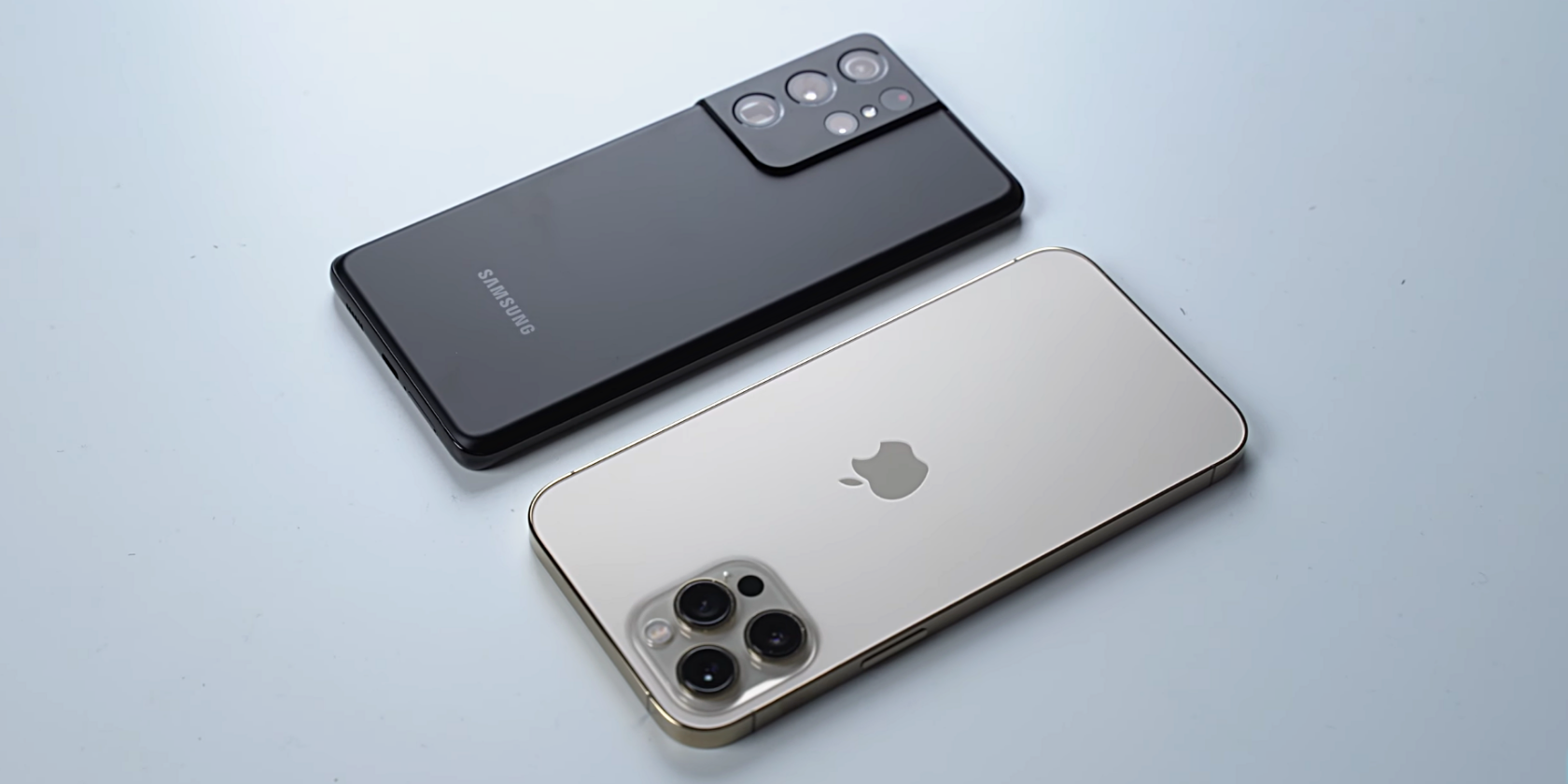
All three chipsets are built on a 5nm fabrication process and are 5G-ready. For the S21 series, Samsung has fixed a lot of what made its custom chips disappointing in the past.
And yet, the Exynos 2100 is still not up to the mark in terms of the longevity, efficiency, and consistency seen on the Snapdragon 888. The differences between the two variants aren't obvious at first, but they become increasingly prominent after multiple sessions of gameplay and media consumption.
On average, the sheer performance delivered by iPhone 12 Pro Max and the Galaxy S21 Ultra is strikingly similar. The former has better rendering speeds while the latter opens apps a tiny bit quicker. The AnTuTu score for the iPhone clocks somewhere around 638584, while the Galaxy scores slightly higher at 657150.
Both devices can handle intense gaming sessions quite well and do not have any major overheating issues.
3. Display: Super Retina XDR vs. Dynamic AMOLED 2X
The iPhone 12 Pro Max comes with a 60Hz Super Retina XDR panel—a fancy way of saying OLED—with HDR10 support and can hit a peak brightness of 1200 nits. The display stretches 6.7 inches, going above FHD+ resolution at 1284x2778 pixels with a pixel density of 458 ppi that scales to about 87.4% screen-to-body ratio.
The Galaxy S21 Ultra comes with an adaptive 120Hz Dynamic AMOLED 2X panel with HDR10+ support, and can hit a peak brightness of 1500 nits. The display stretches 6.8 inches with QHD resolution at 1440x3200 pixels with a 515 ppi density that scales to about 89.8% screen-to-body ratio.
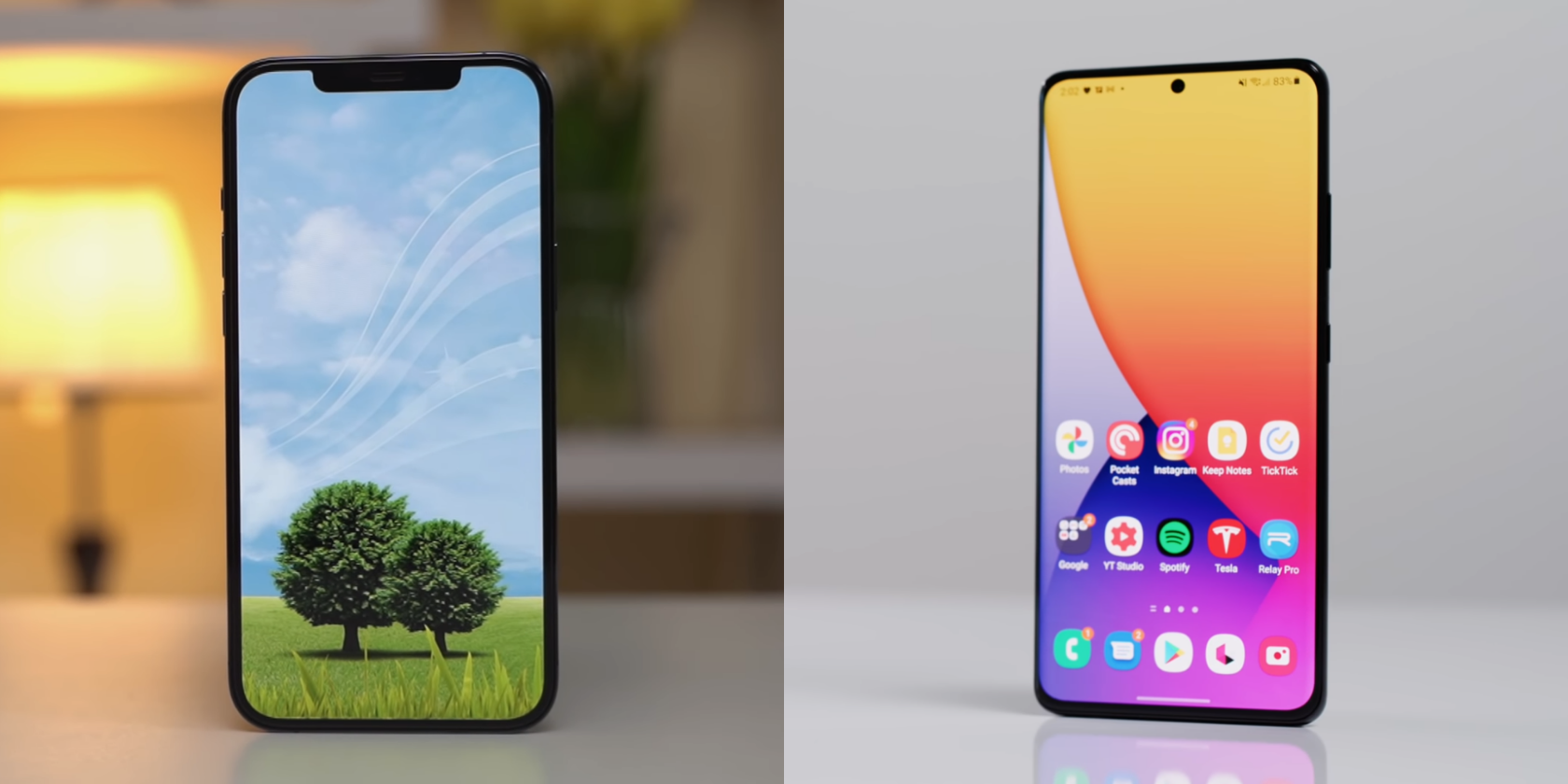
Both panels are highly responsive, amazing to look at, and color-accurate. However, the Galaxy S21 Ultra can still keep going strong even under the harshest afternoon sunlight given its higher peak brightness. It also looks a bit sharper given its higher pixel density, though it's not a noticeable difference in everyday use.
The screen on the device is also more fluid with its higher refresh rate and feels more modern to look at thanks to its higher screen-to-body ratio. This shouldn't be a surprise since Samsung has a reputation for building the best display tech in the industry.
4. Battery: 3687mAh vs. 5000mAh
An ideal battery is one that makes you forget about it. In other words, it's something you don't have to constantly worry about or go out of your way to charge it to ensure that it won't suddenly die on you when you need it the most.
If we're talking numbers, the Galaxy S21 Ultra packs a beefy 5000mAh battery with fast 25W wired, 15W wireless, and 4.5W reverse wireless charging support.
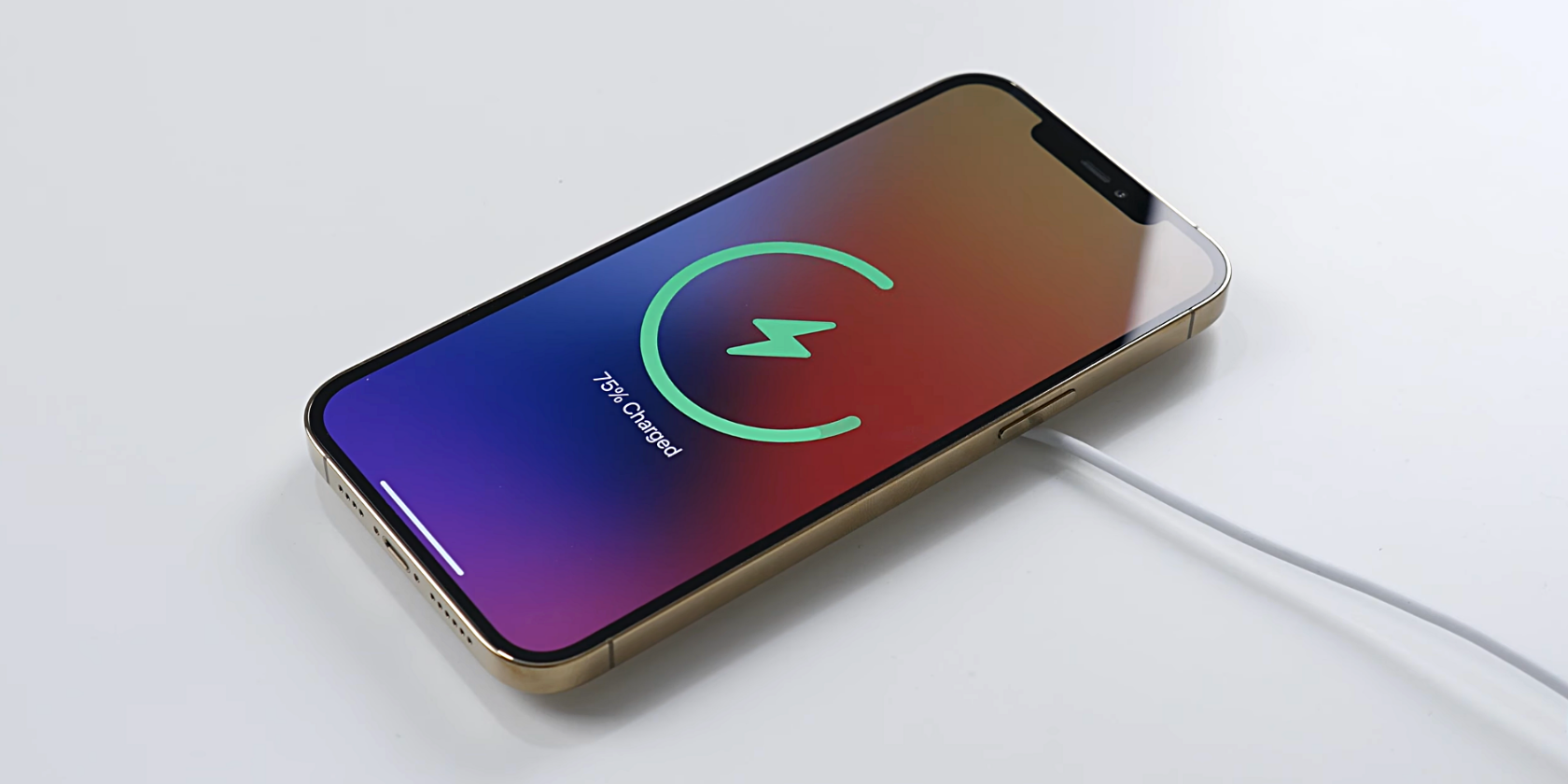
The iPhone 12 Pro Max has a 3687mAh battery and supports "fast" 15W charging using Apple's MagSafe charger which takes more than 3 hours to go from empty to full. However, because the in-house A14 Bionic chip is so efficient and well-integrated with the Apple ecosystem, it doesn't consume a lot of power throughout the day, making it last almost as much as the S21 Ultra.
Neither of the two devices comes with a charger inside the box—as an initiative to help reduce global e-waste and opt for sustainable methods. But the cable that comes with the iPhone is a USB-C to Lightning cable. So if you don't have a USB-C charging brick already (which is likely for a loyal iPhone user), you have to buy a new charger anyway.
This then leads to more packing, shipping, and a higher carbon footprint—which defeats the whole purpose.
5. Build Quality: Stainless Steel vs. Aluminum
The iPhone 12 Pro Max is protected by Apple's new Ceramic Shield (a hybrid between glass and ceramic) on the front which it boldly claims to be tougher than any smartphone glass. The back of the device does not enjoy the same protection and is shielded by the weaker glass found on last year's iPhone 11. The frame is made of robust stainless steel which easily shows fingerprints.
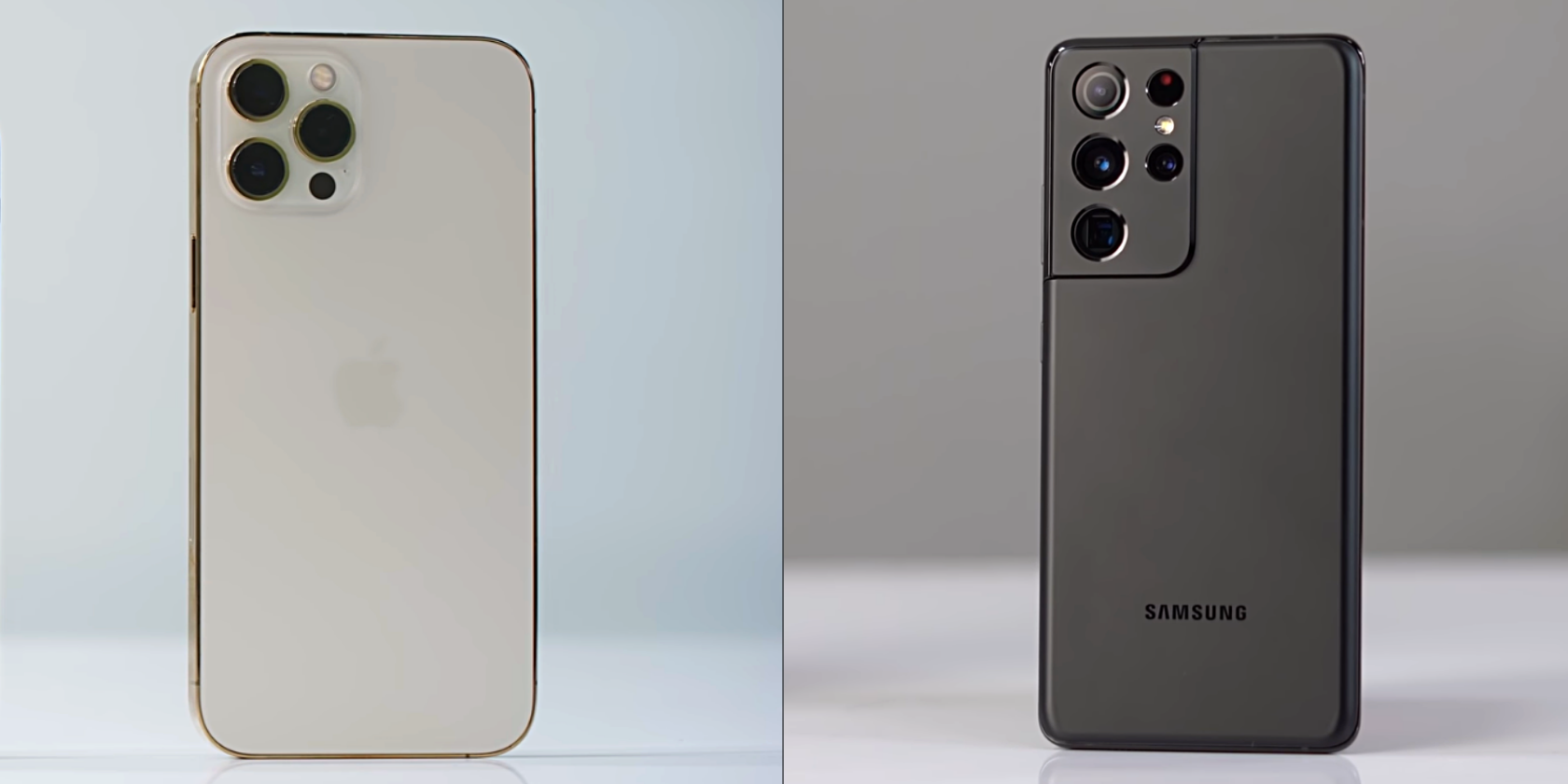
The Galaxy S21 Ultra goes for Gorilla Glass Victus protection on both sides and has a softer frame made of aluminum. When put to test, both devices do a great job resisting scratches and accidental drops. However, the S21 Ultra's new bulging contour-cut design can sometimes bring bad news to the camera module when hit straight-on.
When compared with the Gorilla Glass Victus, Apple's Ceramic Shield isn't as dramatically stronger as the tech giant advertises it to be. Both devices have a similar level of strength and can endure everyday use without taking any major damage, and are backed by an official IP68 rating.
The frosty matte finish on both devices feels smooth to hold in hand and helps avoid fingerprint smudges.
However, the Galaxy S21 Ultra sits more comfortably in the palm despite being a bigger device thanks to its curved smooth edges as opposed to the sharp flat sides on the iPhone 12 Pro Max that poke into the skin when reaching for upper UI elements. The S21 Ultra is taller and thicker, while the iPhone is wider and heavier due to its hard stainless steel rails.
Both devices lack a headphone jack and do not feature a microSD slot.
The new Qualcomm 2nd-gen ultrasonic in-display fingerprint sensor on the Galaxy S21 Ultra is now faster and has a physically bigger footprint (1.77 times). This makes it easier to unlock your phone without thinking too much about accurately positioning your finger on the screen.
Apple's Face ID feature, although fast, is deemed useless for the duration of the pandemic as people wearing masks blocks the information needed by the device's sensors on its infamous notch. At the same time, haptics on this device feels better.
The Best of Apple vs. the Best of Samsung
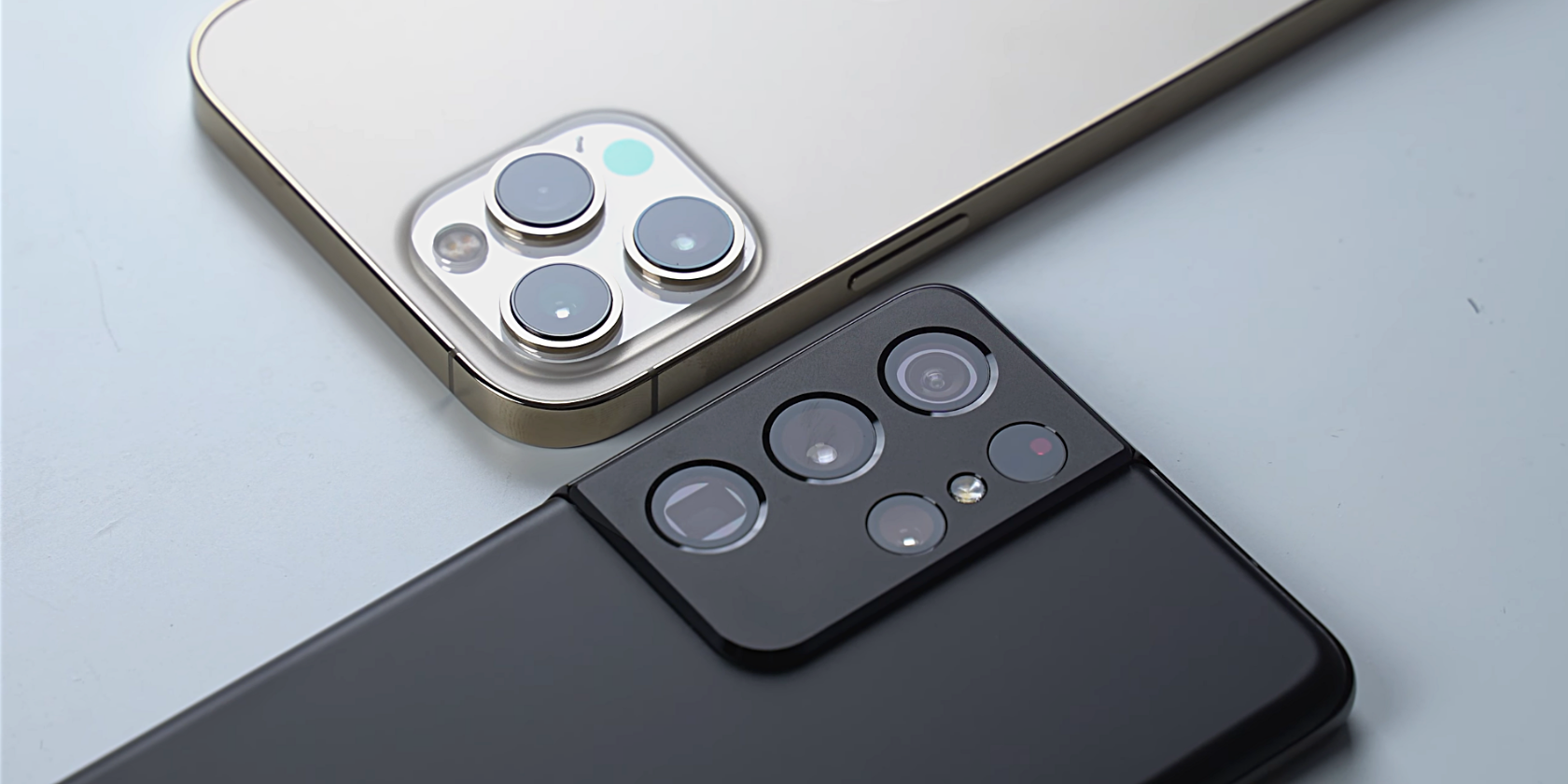
The iPhone 12 Pro Max provides a more seamless user experience and is essentially a door to get you to enter the Apple ecosystem with services like Apple Music and Apple Pay.
The Galaxy S21 Ultra goes hard on experimenting with new forms and features that no longer feel like gimmicks but provide real functionality, and has S Pen support. That said, both devices are performance beasts, take great photos and videos, are durable, have great battery life, and can easily deliver even under the harshest conditions.
The iOS experience is best for someone who wants their phone to "just work" as opposed to the Android experience which lets you play around with and personalize your device. The harder you try to nitpick differences, the more obvious they become.
0 Comments